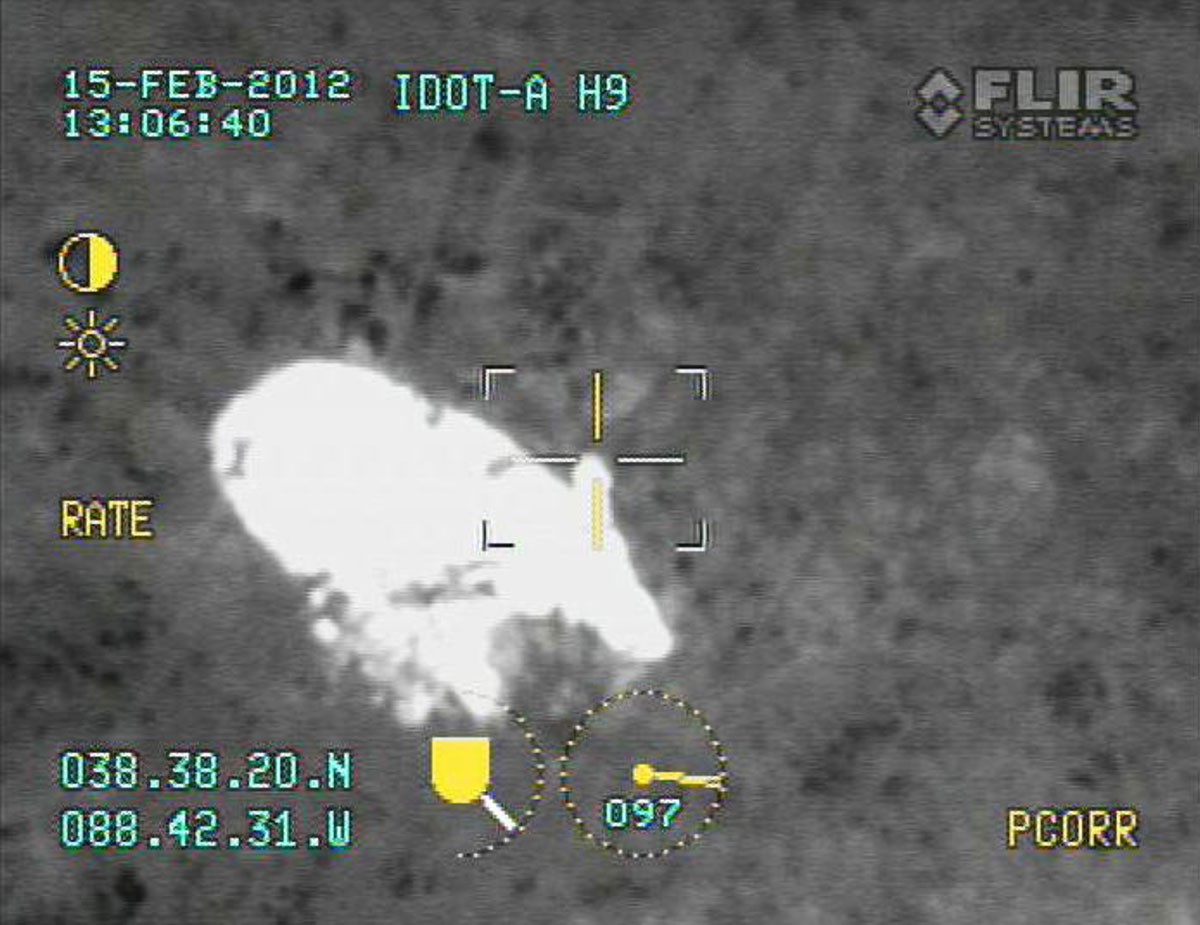
Feral swine by Forward Looking Infared Radar (FLIR). Photo by Rob Thorpe, Illinois Department of Transportation.



Feral swine by Forward Looking Infared Radar (FLIR). Photo by Rob Thorpe, Illinois Department of Transportation.

One of the first steps in the management of the feral swine issue was to divide the state into management units: Fulton County Damage Management Unit, Fayette/Marion County Damage Management Unit, and the rest of the state. The Illinois Department of Natural Resources (IDNR) developed a database for IDNR and the U.S. Department of Agriculture (USDA)–Wildlife Services (WS) staff to track observations of feral swine, and WS hired a Wildlife Specialist for each management unit to assist landowners requesting damage management assistance.
A Feral Swine Impact Assessment was conducted that highlighted feral swine had the potential to impact 26 counties, 30 Illinois Nature Preserves and Land and Water Reserves, 81 Illinois Natural Areas Inventory properties (INAIs), and 73 state endangered or threatened species. The Illinois Natural History Survey modified their Hunter Harvest Survey, a survey randomly sent to 3,000 hunters each year, asking hunters to report sightings of feral swine.
Lastly, IDNR staff added a question to the check-in system used by successful deer and turkey hunters in Illinois, providing the ability to track reports of feral swine in real time and graphically see which counties may have feral swine.
Prior to removing feral swine, IDNR and WS staff must locate the properties where swine exist. Sometimes it’s relatively easy, because the areas have had recent swine sightings or damage reports. For the tough-to-locate individuals, sometimes a helicopter equipped with Forward Looking Infrared Radar (FLIR) is used. This camera uses imaging technology that senses infrared radiation, or in the case of feral swine, body heat.
After IDNR and WS staff locate feral swine, a management plan is developed in consultation with landowners, and trapping is implemented. Trapping has proven to be one of the most effective and efficient methods to remove feral swine in Illinois.
A corral trap allows for the capture of an entire sounder (family group) of feral swine which reduces habituating or dispersing non-captured swine. Soured corn is placed in a trapping location. Once feral swine begin feeding at the site, the trap is assembled in stages to acclimate swine to the trap. WS staff then monitor the trap and trigger the gate when appropriate.
Captured feral swine are humanely euthanized, biological samples taken, and the animals are either given to the landowner, upon request, or disposed of following the Illinois Dead Animal Disposal Act (225 ILCS 610).
As of March 2016, 376 feral swine have been removed from the Fulton County Damage Management Unit and assistance provided to 47 landowners (~18,339 acres). The Fayette/Marion County Damage Management Unit has a smaller population of feral swine; therefore, fewer individuals have been removed from this area. Assistance has been provided to 51 landowners (~9,010 acres) and 83 feral swine have been removed. Numerous reports of feral swine have come from elsewhere in the state, most of which have been identified as escaped domestic swine and potbelly pigs.
To report feral swine, call the IDNR Division of Wildlife Resources at (815) 369-2414 or USDA-Wildlife Services at (866) 487-3297.
NEXT ISSUE: Targeting Feral Swine in Illinois: Part 3—Lessons Learned from Managing Feral Swine in Illinois
Mark Alessi is the Wildlife Chief in Illinois Department of Natural Resources.
Submit a question for the author